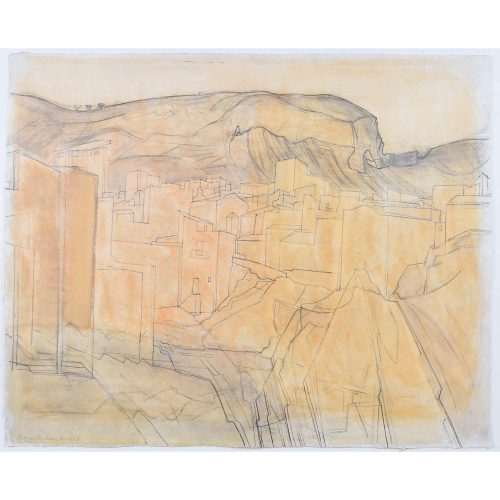-
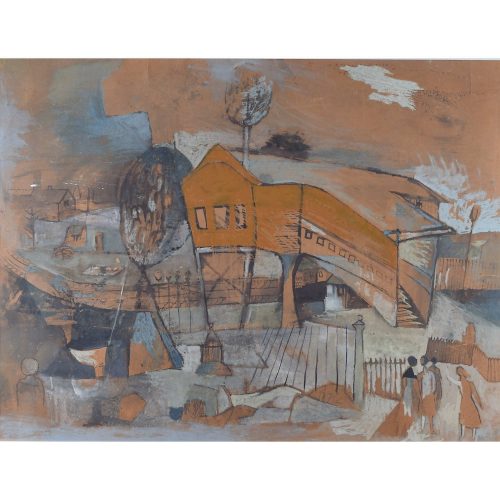
Gwyneth Johnstone (1915 - 2010)
The Railway Bridge
Mixed media 64 x 83 cm Signed lower left in paint, and monogrammed lower left in pencil. Provenance: the estate of the artist. Johnstone explores the possibilities of abstraction in this semi-delirious depiction of a railway bridge. Painted in tones of burnt umber, orange, grey, and black, the picture is populated by warped railings, bending trees, and staring onlookers, all of which centre around a railway line and bridge. Tanya Harrod described Johnstone's painting style a 'a hallucinogenic, haunting pastoral', and that is immensely evident in this picture. Johnstone was an English painter who worked mostly in oils and often depicted poignant modern landscapes. Her parents were the musician Nora Brownsford and the artist Augustus John. She studied at the Slade School of Fine Art, where she established lifelong friendships with fellow artists Mary Fedden and Virginia Parsons. After the Slade, Johnstone was taught academicised cubism by the painter André Lhote at the Académie de la Grande Chaumière in Paris. For a brief period in the early 1950s she took life classes with the surrealist artist Cecil Collins at the Central School of Arts and Crafts. -
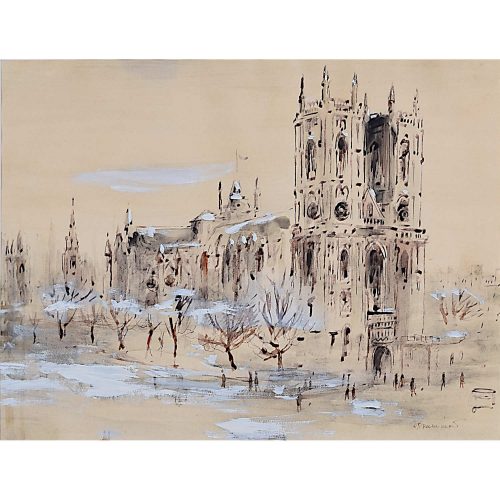
Violet Hilda Drummond (British, 1911-2000)
Westminster Abbey
Watercolour 33 x 43 cm Signed lower right. Here, the artist paints a sprightly view of Westminster Abbey, which rises from a sea of nondescript pedestrians. The mostly monochrome palette, gently highlighted with splashes of a muted red, and white details, communicates the character of the city. Drummond's father, a Scots Guard, was killed at Ypres in 1914. Drummond and her two sisters were brought up by her mother and educated in Eastbourne and at Le Chateau Vitry-sur-Seine, a Parisian finishing school. After Paris, Drummond attended St Martin’s School of Art. Later in life, she began writing children’s picture books – the most notable being Miss Anna Truly (1945) and her Little Laura series (1960 onwards). She also produced cartoons for the BBC. 'Mrs Easter and the Stork' – published in 1957 by Faber & Faber – was awarded the Kate Greenway Medal. Drummond later took to painting watercolours of London street scenes which have remained popular ever since. Provenance: the Arthur Andersen art collection. -
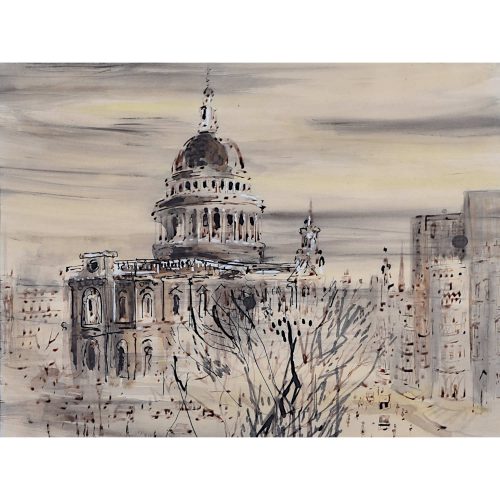
Violet Hilda Drummond (British, 1911-2000)
St Paul's Cathedral
Watercolour 33 x 43 cm Signed upper right (visible in the photograph showing the framed painting). Provenance: the Arthur Andersen art collection. Here, the artist paints a sprightly view of St Paul's, which rises from a sea of nondescript traffic and pedestrians. The mostly monochrome palette, gently highlighted with a yellow wash and white details, communicates the character of the city. Drummond's father, a Scots Guard, was killed at Ypres in 1914. Drummond and her two sisters were brought up by her mother and educated in Eastbourne and at Le Chateau Vitry-sur-Seine, a Parisian finishing school. After Paris, Drummond attended St Martin’s School of Art. Later in life, she began writing children’s picture books – the most notable being Miss Anna Truly (1945) and her Little Laura series (1960 onwards). She also produced cartoons for the BBC. 'Mrs Easter and the Stork' – published in 1957 by Faber & Faber – was awarded the Kate Greenway Medal. Drummond later took to painting watercolours of London street scenes which have remained popular ever since. -

Ethel Louise Rawlins (1880 – 1940)
A Garden Below the South Downs
Oil on canvas51 x 61 cmSigned lower right.Rawlins was a painter who studied at the Slade School of Fine Art and in Newlyn, Cornwall. She settled in Sussex in the early 1920s, and often painted the rolling hills of the Sussex landscape. Here, blue hills and a grey sky serve as the background for an extensive garden complete with stone urns, flowers, and slanting shadows created by the late afternoon sun. -
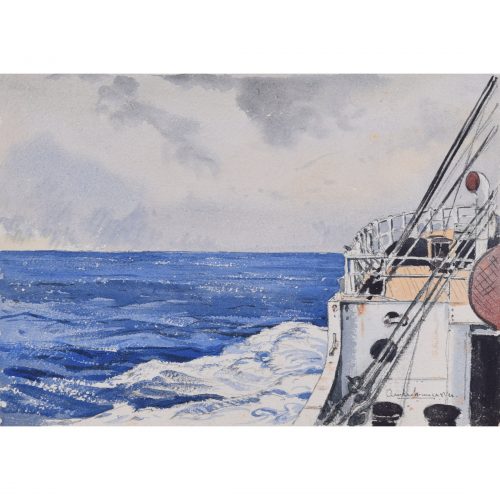
Claude Muncaster
The Bow Wash
Pen and watercolour 21x28cm Framed Provenance: Martin Muncaster, the artist's son. Click here for biographical details and other works by the artist. If you are interested email info@manningfineart.co.ukor call us on 07929 749056. -
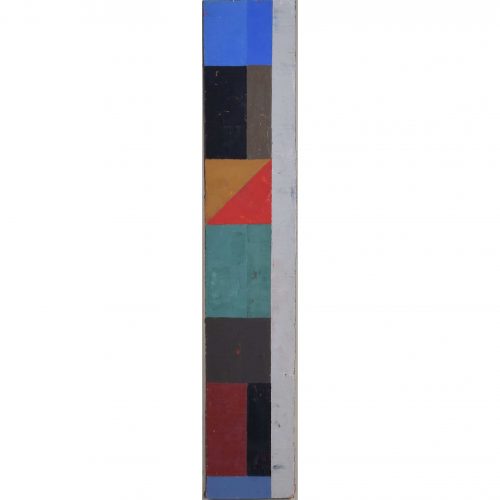
Bryan Ingham (1936-1997)
Erotische Bild (1988)
Oil on board 62 x 11 cm Provenance: Fracis Graham-Dixon gallery. Titled to backboard and dated 1988. Bryan Ingham was born in Yorkshire. For his National Service he joined the RAF, and spent his time in Germany as an airman. After demobilisation, his final report included the statement that "Ingham is an artistic sort of airman." In his spare time he had started painting in oils, and by the time he left the RAF he had completed a large number of paintings. He studied at St Martin's School of Art in London, where he had the tuition of a fine post-war generation of teachers who helped him to hone his draughtsmanship and other skills, and he swiftly showed a capacity for painting that drew the attention of his tutors and peers. On graduating he was offered and accepted a post-graduate place at the Royal College of Art, where in his second year he was awarded a Royal Scholarship and was a contemporary of a number of now better-known names including David Hockney. Ingham applied for and received a Leverhulme travel award to explore the sites of the great Renaissance painters, and spent many happy months engaged in this expedition. He spent time at the English Art school in Rome, where he lived well and busied himself the same studio that Barbara Hepworth had used. At this stage of his career, Ingham consciously rejected the prospect of pursuing a career as an establishment artist, although the RA was open to him, and he went to live in remote cottage in Cornwall. The subsequent years were varied and highly productive, and Ingham's personal artistic voice emerged in his oeuvre in the form of an always-developing dialogue with influences both of landscape and other artists of every age. His preoccupation with etching resulted in several hundred plates, some very large, and the results are as unmistakable as they are varied, but invariably of outstanding quality. He produced a number of sculptures in bronze and in plaster, while his lifelong output of paintings remained small but again of very high quality. He taught etching regularly until about 5 years before his death, latterly at Falmouth Art School, and also at Farnham Art College. During the late eighties he established a relationship with the art dealer Francis Graham-Dixon, who had a London gallery. This meant that his paintings were professionally marketed for the first time, and prices for his work rose steadily in the last ten years of his life, and subsequently. He was able to purchase a cottage in Helston for his parents, who lived there until their deaths. He then moved into a fine set of converted-barn studios with a patch of garden, quietly situated off the High St in Helston, and it was here, on 22 September 1997, that he died, having quietly suffered from cancer for nearly a year. Condition: Generally very good, scrapes to board as intended by artist. Framed. If you'd like to know more, please email info@manningfineart.co.uk or call us on 07929 749056. -
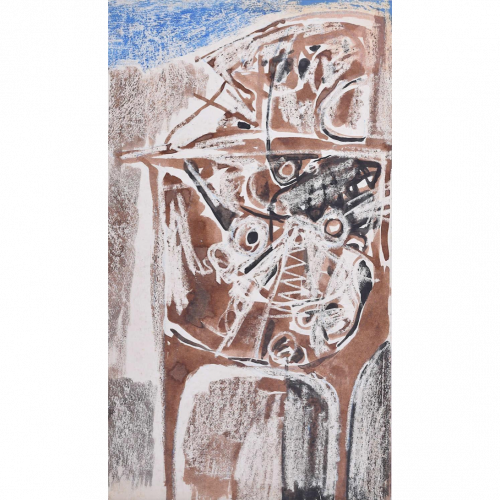
Charles Pulsford ARSA (1912-1989)
Abstract Landscape
Watercolour with wax resist 55 x 31 cm Provenance: the artist; the residual stock of William Hardie. Pulsford was born in Staffordshire to Scottish parents. His family returned to Dunfermline when he was a child, and he subsequently attended Edinburgh College of Art (ECA) between 1933 and 1937. He, along with other prominent Scottish artists, embraced modernism and abstraction following the end of the war. Alan Davie, William Turnbull, William Gear and Eduardo Paolozzi are the key artists of the group with which he was association, and the National Galleries of Scotland regard Pulsford as the 'fifth man' of the group. Between 1952 and 1960 he taught at ECA and then at Canterbury College of Art. Condition: Generally very good. If you are interested, please email info@manningfineart.co.uk or call us on 07929 749056. -
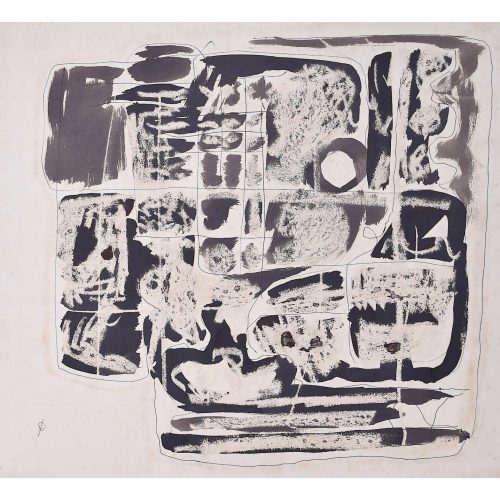
Charles Pulsford ARSA (1912-1989)
'Monochrome Landscape'
Watercolour with ink 39 x 43 cm Initialled lower left Provenance: the artist; the residual stock of William Hardie. Pulsford was born in Staffordshire to Scottish parents. His family returned to Dunfermline when he was a child, and he subsequently attended Edinburgh College of Art (ECA) between 1933 and 1937. He, along with other prominent Scottish artists, embraced modernism and abstraction following the end of the war. Alan Davie, William Turnbull, William Gear and Eduardo Paolozzi are the key artists of the group with which he was association, and the National Galleries of Scotland regard Pulsford as the 'fifth man' of the group. Between 1952 and 1960 he taught at ECA and then at Canterbury College of Art. Condition: Good. Paper slightly toned, a little spotting. If you are interested, please email info@manningfineart.co.uk or call us on 07929 749056. -
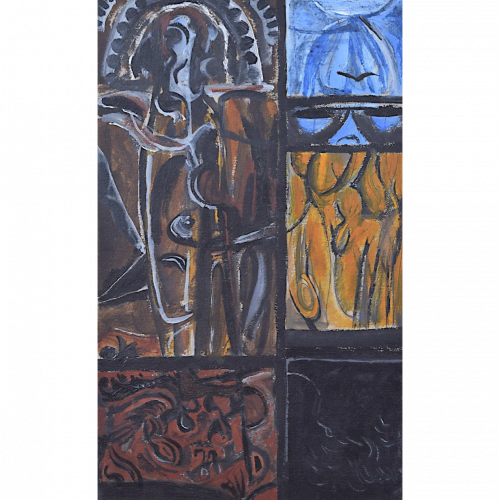
Charles Pulsford ARSA (1912-1989)
Abstract Stained Glass Design
Gouache 40 x 25 cm Provenance: the artist, the residual stock of William Hardie Gallery. This mesmerising depiction of an abstract figure is likely a design for a stained glass window panel. Pulsford was born in Staffordshire to Scottish parents. His family returned to Dunfermline when he was a child, and he subsequently attended Edinburgh College of Art (ECA) between 1933 and 1937. He, along with other prominent Scottish artists, embraced modernism and abstraction following the end of the war. Alan Davie, William Turnbull, William Gear and Eduardo Paolozzi are the key artists of the group with which he was association, and the National Galleries of Scotland regard Pulsford as the 'fifth man' of the group. Between 1952 and 1960 he taught at ECA and then at Canterbury College of Art. Condition: Generally very good. If you are interested, email info@manningfineart.co.uk or call us on 07929 749056. -
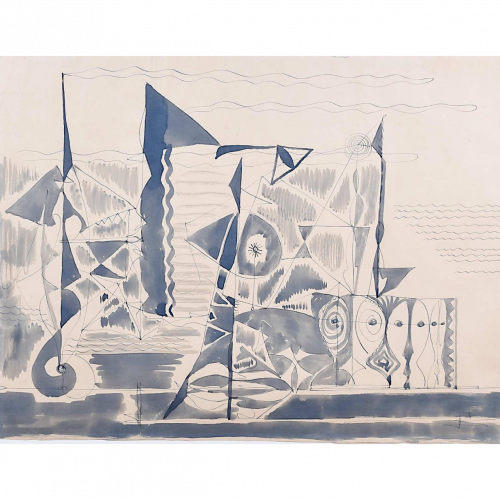
Charles Pulsford ARSA (1912-1989)
Abstract Harbour
Watercolour 36 x 46 cm Signed lower right. Pulsford was born in Staffordshire to Scottish parents. His family returned to Dunfermline when he was a child, and he subsequently attended Edinburgh College of Art (ECA) between 1933 and 1937. He, along with other prominent Scottish artists, embraced modernism and abstraction following the end of the war. Alan Davie, William Turnbull, William Gear and Eduardo Paolozzi are the key artists of the group with which he was association, and the National Galleries of Scotland regard Pulsford as the 'fifth man' of the group. Between 1952 and 1960 he taught at ECA and then at Canterbury College of Art. Provenance: the artist, the residual stock of William Hardie Gallery. Condition: Generally very good, in fine hand-finished frame. If you are interested, email info@manningfineart.co.uk or call us on 07929 749056. -
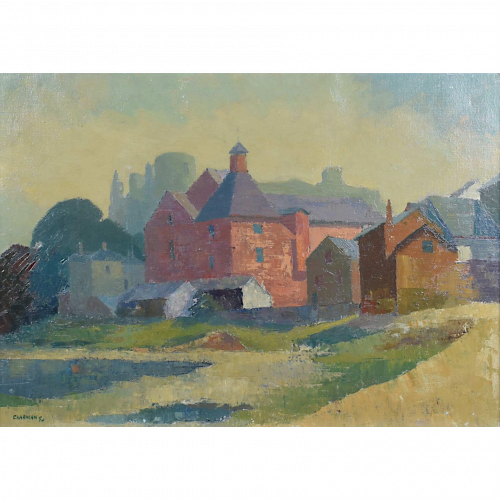
Clifford Charman (1910-1993)
Brewery and Ruined Castle, Cockermouth
Oil on canvas 38 x 55 cm Signed and dated lower left. Provenance: The Artist's Studio Sale, Bonhams, London (18 March 1993); Peter Constant Fine Art. Born in Bexleyheath in Kent, Charman studied at Regent Street Polytechnic just before, and just after, the Second World War. He exhibited widely, including at the Royal Academy, the RBA, Chelsea Arts Society, and abroad. Elected in 1954 to the ROI, he also won the James Bourlet Prize in 1982. His work is in collections including that of the Guildhall. If you'd like to know more, please email info@manningfineart.co.uk or call us on 07929 749056. Condition: Generally very good. Signed lower left. -
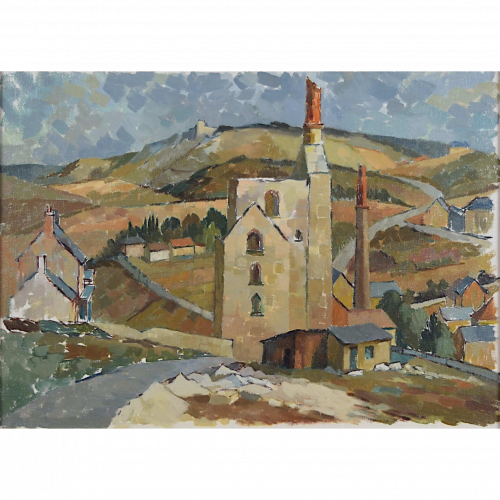
Clifford Charman (1910-1993)
Landscape with Farmhouses
Oil on canvas 38 x 55 cm Provenance: the artist's studio sale, Bonhams, London 1993. Born in Bexleyheath in Kent, Charman studied at Regent Street Polytechnic just before, and just after, the Second World War. He exhibited widely, including at the Royal Academy, the RBA, Chelsea Arts Society, and abroad. Elected in 1954 to the ROI, he also won the James Bourlet Prize in 1982. His work is in collections including that of the Guildhall. If you'd like to know more, please email info@manningfineart.co.uk or call us on 07929 749056. Condition: Generally very good. -
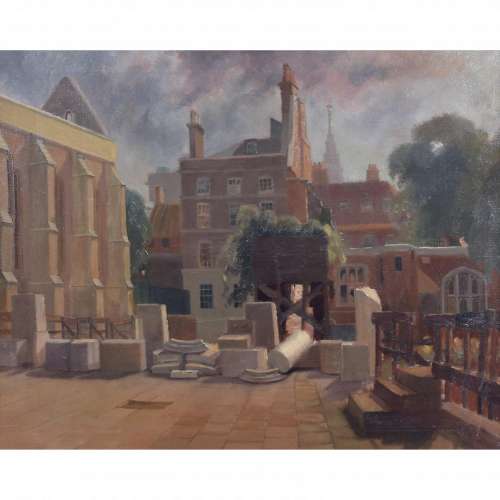
Clifford Charman (1910-1993)
Temple Church, London, after Bombing
Oil on canvas 39 x 49 cm Provenance: The Artist's Studio Sale, Bonhams, London (18 March 1993); Peter Constant Fine Art. Born in Bexleyheath in Kent, Charman studied at Regent Street Polytechnic just before, and just after, the Second World War. He exhibited widely, including at the Royal Academy, the RBA, Chelsea Arts Society, and abroad. Elected in 1954 to the ROI, he also won the James Bourlet Prize in 1982. His work is in collections including that of the Guildhall. If you'd like to know more, please email info@manningfineart.co.uk or call us on 07929 749056. Condition: Generally very good. -

Bryan Ingham (1936-1997)
Upright Jug (1993-95)
Pencil and oil on board 64 x 19 cm Provenance: Bohun Galleries, Paintings in Hospitals. Signed, titled and dated 1993-95 (on backboard). Bryan Ingham was born in Yorkshire. For his National Service he joined the RAF, and spent his time in Germany as an airman. After demobilisation, his final report included the statement that "Ingham is an artistic sort of airman." In his spare time he had started painting in oils, and by the time he left the RAF he had completed a large number of paintings. He studied at St Martin's School of Art in London, where he had the tuition of a fine post-war generation of teachers who helped him to hone his draughtsmanship and other skills, and he swiftly showed a capacity for painting that drew the attention of his tutors and peers. On graduating he was offered and accepted a post-graduate place at the Royal College of Art, where in his second year he was awarded a Royal Scholarship and was a contemporary of a number of now better-known names including David Hockney. Ingham applied for and received a Leverhulme travel award to explore the sites of the great Renaissance painters, and spent many happy months engaged in this expedition. He spent time at the English Art school in Rome, where he lived well and busied himself the same studio that Barbara Hepworth had used. At this stage of his career, Ingham consciously rejected the prospect of pursuing a career as an establishment artist, although the RA was open to him, and he went to live in remote cottage in Cornwall. The subsequent years were varied and highly productive, and Ingham's personal artistic voice emerged in his oeuvre in the form of an always-developing dialogue with influences both of landscape and other artists of every age. His preoccupation with etching resulted in several hundred plates, some very large, and the results are as unmistakable as they are varied, but invariably of outstanding quality. He produced a number of sculptures in bronze and in plaster, while his lifelong output of paintings remained small but again of very high quality. He taught etching regularly until about 5 years before his death, latterly at Falmouth Art School, and also at Farnham Art College. During the late eighties he established a relationship with the art dealer Francis Graham-Dixon, who had a London gallery. This meant that his paintings were professionally marketed for the first time, and prices for his work rose steadily in the last ten years of his life, and subsequently. He was able to purchase a cottage in Helston for his parents, who lived there until their deaths. He then moved into a fine set of converted-barn studios with a patch of garden, quietly situated off the High St in Helston, and it was here, on 22 September 1997, that he died, having quietly suffered from cancer for nearly a year. If you'd like to know more, please email info@manningfineart.co.uk or call us on 07929 749056. Condition: Generally excellent; framed. -
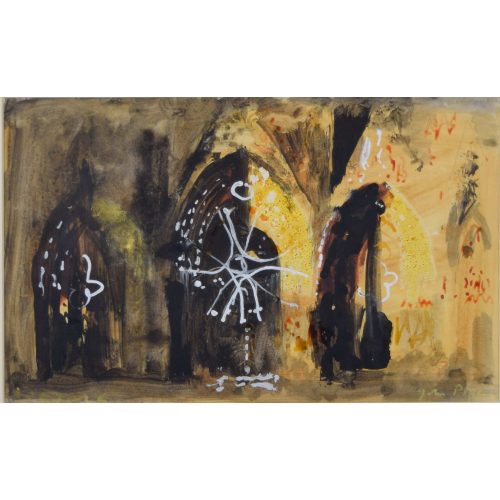
John Piper (1903-1992)
Reims Cathedral (c. 1960)
Ink, watercolour and gouache 21x35cm Inscribed 'Reims' lower left and signed 'John Piper' lower right. Piper loved all things France, and all things Cathedral; in this work, he brings the cathedral of Reims, where France's monarchs were crowned, to life. Piper also produced an aquatint of Reims which was published in 1972. For other works by the artist and biographical details, click here. If you are interested email info@manningfineart.co.uk or call us on 07929 749056. Condition: Generally excellent; framed. -
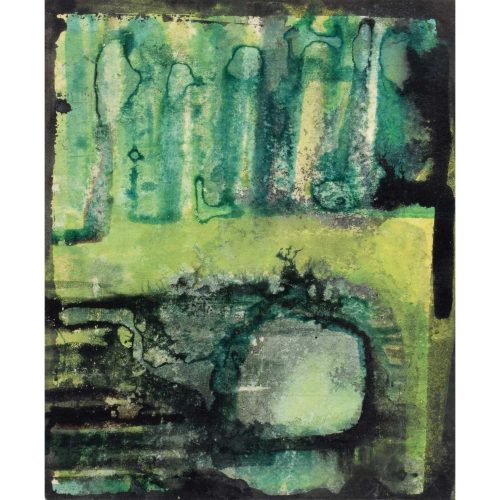
John Piper (1903-1992)
Study for the Piper Building mural
Gouache 14.5x11.5cm Provenance: P Manzareli (who built the fibreglass murals for Piper), gift from the artist; Milne & Moller Fine Art; Katharine House Gallery; private collection, Scotland. This study is a fascinating part of London's architectural history. The Piper Building is a mid-century architectural icon in Fulham. Built in the 1950s as 'Watson House', it was a laboratory complex for the North Thames Gas Board and has an innovative concrete structure. Piper was commissioned to produce the murals surrounding the building. The Gas Board moved out in the mid 1980s. Scheduled for demolition in the 1990s, the building was instead converted into seventy apartments and renamed the Piper Building. With double-height ceilings, the apartments were sold as shells, and purchasers were free to commission their own architects and builders. Condition: Generally excellent; framed. For other works by the artist and biographical details, click here. If you are interested email info@manningfineart.co.uk or call us on 07929 749056. -
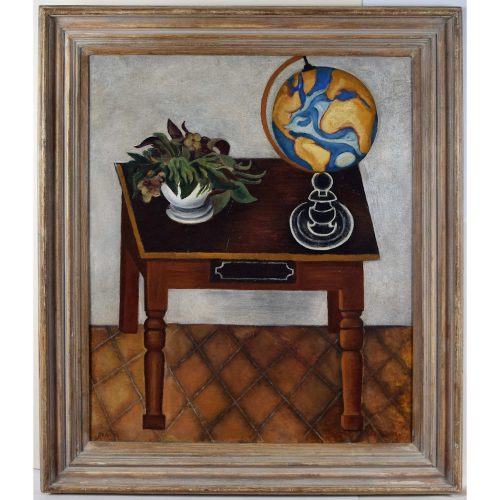
John Aldridge RA (1905 - 1983)
Still Life Painted at El Porche, Deja, Majorca 1932
Oil on Board 74 x 62 cm Signed ‘John Aldridge’ lower right and titled to reverse. Aldridge read Greats at Corpus Christi College, Oxford, and then moved to London in 1928 and taught himself to paint. From 1931 to 1933 he exhibited with the Seven and Five Society at the Leicester Galleries and in 1934 he exhibited at the Venice Biennale. At this time he began his life-long association with the poet Robert Graves and the poets and artists who centred themselves on him in the village of Deia in Majorca. In 1933 he moved to Place House in Great Bardfield with his cats. He became a friend of his neighbour Edward Bawden, and the two collaborated during the 1930s on Bardfield wallpapers, distributed by Cole & Sons. During the War, Aldridge served in the Intelligence Corps, interpreting aerial photographs. Following the war he returned to Great Bardfield and painted scenes of the Essex countryside, and also of Majorca. By this period, his early association with the avant garde of British art had been lost; today, his rural scenes are very popular but arguably lack the complexity of his earlier works, such as this contemplative still life. His art is in major public collections such as the Tate, the British Council, the National Portrait Gallery, the Royal Academy and the Victoria and Albert Museum. The Fry Art Gallery in Saffron Walden, which specialises in East Anglian pictures, has a significant holding of his work. Condition: generally very good. Distressed frame with occasional loss, and hardboard substrate bowed. -
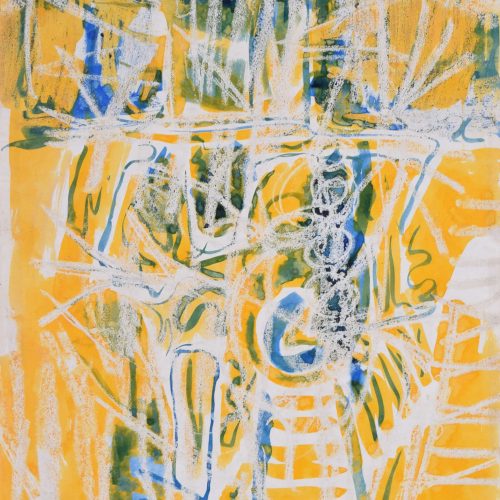
Charles Pulsford ARSA (1912 - 1989)
Abstract Figure in Yellow and Blue
Watercolour and ink 56 x 38 cm Signed lower right. An abstract figure in arresting colours. The artist plays with the intersection of round and lateral mark-making to form a human figure, perhaps reminiscent of a crucifixion. Pulsford's skill as an abstract landscape artist is also evident here, with the form suggestive of natural and industrial topography like fields, rivers, railway tracks, and electric pylons. Pulsford was born in Staffordshire to Scottish parents. His family returned to Dunfermline when he was a child, and he subsequently attended Edinburgh College of Art (ECA) between 1933 and 1937. He, along with other prominent Scottish artists, embraced modernism and abstraction following the end of the war. Alan Davie, William Turnbull, William Gear and Eduardo Paolozzi are the key artists of the group with which he was association, and the National Galleries of Scotland regard Pulsford as the 'fifth man' of the group. Between 1952 and 1960 he taught at ECA and then at Canterbury College of Art. Condition: generally very good, old tape stains to extreme margins. If you are interested email info@manningfineart.co.uk or call us on 07929 749056. Provenance: the artist, the residual stock of William Hardie. -

John Piper (1903-1992)
Bullslaughter Bay
Watercolour, gouache and pastel on paper 27.5 x 35.5cm John Piper CH was an English painter, printmaker, and designer of stained-glass windows. His work often focused on the British landscape, especially churches and monuments, and included tapestry designs, book jackets, screen-prints, photography, fabrics and ceramics. Piper spent a considerable amount of time in Pembrokeshire, frequently returning to the landscape of Bullslaughter Bay; this painting was probably produced there in the mid-1950s. The artist captures an animated, capricious bay, characterised by a distinctive colour palette and stamped with irregular rock formations. Condition: generally excellent. For other works by the artist and biographical details, click here. If you are interested email info@manningfineart.co.uk or call us on 07929 749056. -
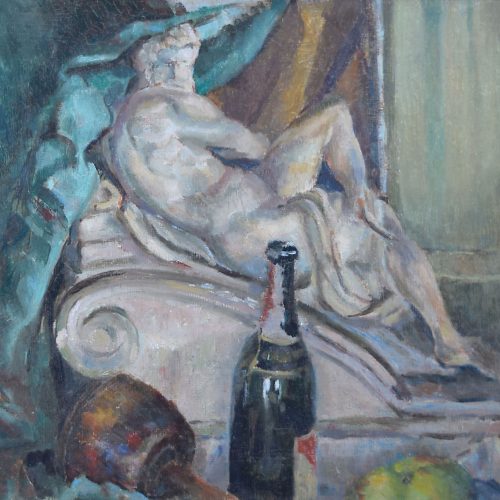 Sir Terry Frost (1915-2003) Bottle and Statue Oil on board c. 1947 38 x 46cm A distinctive still life featuring bottle, statue, and drapery. Terry Frost was a prominent British abstract artist. Frost is most noted for his simplistic abstract forms and unusual colour; he worked alongside the St Ives group and as Barbara Hepworth's assistant for several years, his artistic style being heavily influenced by them. In 1992 he became a Royal Academician, and he was made Sir Terry Frost in 1998. Bottle and Statue highlights Frost's unique compositional skill. His brushwork makes the statue seem like a real nude, who, framed by turquoise and ochre draperies, examines the still life in the foreground. An early work, painted shortly after the War and prior to his adoption of abstraction. For other works by Frost and biographical details please click here. Condition: A little craquelure in the oil above the statue's head.
Sir Terry Frost (1915-2003) Bottle and Statue Oil on board c. 1947 38 x 46cm A distinctive still life featuring bottle, statue, and drapery. Terry Frost was a prominent British abstract artist. Frost is most noted for his simplistic abstract forms and unusual colour; he worked alongside the St Ives group and as Barbara Hepworth's assistant for several years, his artistic style being heavily influenced by them. In 1992 he became a Royal Academician, and he was made Sir Terry Frost in 1998. Bottle and Statue highlights Frost's unique compositional skill. His brushwork makes the statue seem like a real nude, who, framed by turquoise and ochre draperies, examines the still life in the foreground. An early work, painted shortly after the War and prior to his adoption of abstraction. For other works by Frost and biographical details please click here. Condition: A little craquelure in the oil above the statue's head. -

Blair Hughes-Stanton (1902-1981) Reclining Nude, c. 1936
Tempera on canvas 76.5 x 102cm Signed lower right 'Blair H S'. Provenance: The estate of the artist. A magnificent abstract nude rendered in a dynamic colour palette. This is probably Hughes-Stanton's most important work, and belongs to the nation's great, if brief, period of British Surrealism. The three major elements are distinct: the pastel tones of the window view and wall, the sensual curvatures of the pale nude, and the bold foreground featuring a fantastically accomplished still life of a fruit bowl (which could be a painting in and of itself) and the impressively phallic chair back. This is a brilliant example of erotic modernist abstraction. Blair Hughes-Stanton, son of the artist Sir Herbert Hughes-Stanton, was a noted British artist of the interwar period. At the age of 13 he joined the Royal Navy training ship HMS Coway, but at 19 - advised by his father - he abandoned the sea for his paintbox. He studied art at Byam Shaw School (1919-1922) where he was influenced by Leon Underwood (who was a major influence throughout his studying), Royal Academy Schools (1922-23), and Leon Underwood's School (1923-25). He was celebrated mostly for his skills as an engraver, and was a founding member of the English Wood Engraving Society when it was established in 1925. His first wife was the printmaker Gertrude Hermes with whom he illustrated John Bunyan's The Pilgrim's Progress in 1928. In 1931 he became head of the Gregynog Press, later establishing the Gemini Press with his second wife Ida Graves. During the course of his career he worked in various media, though his art frequently focused on the female nude. He taught at Westminster School of Art (1934-39), Colchester School of Art (1945-47); St Martin's School of Art (1947-48); and Central School of Arts and Crafts (1948-80). His teaching career was interrupted by the Second World War, during which he served as a camofleur and then joined the Royal Engineers (ignoring his earlier life in the Navy). Serving in Greece, he was captured as a prisoner of war and was imprisoned in a camp. He returned to England after the war. If you’d like to know more, please email info@manningfineart.co.uk or call us on 07929 749056. -
Out of stock
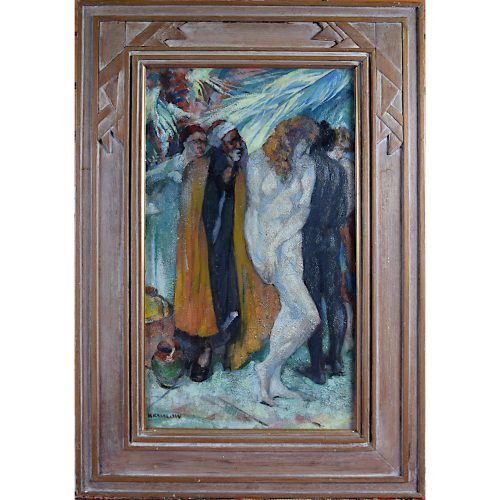
Alfred Wolmark (1877-1961)
Peace Paraded by Conflict
Oil on panelSigned lower left; original frame. An allegorical scene of Peace as a female nude. Alfred Aaron Wolmark was an influential Post-Impressionist painter who studied and exhibited at the Royal Academy Schools and between 1901 and 1936. Wolmark was noted for his use of impasto and for his skills as a colourist. If you’d like to know more, please email info@manningfineart.co.uk or call us on 07929 749056. Condition: Generally excellent; original frame shows a little wear.60 x 34cm -
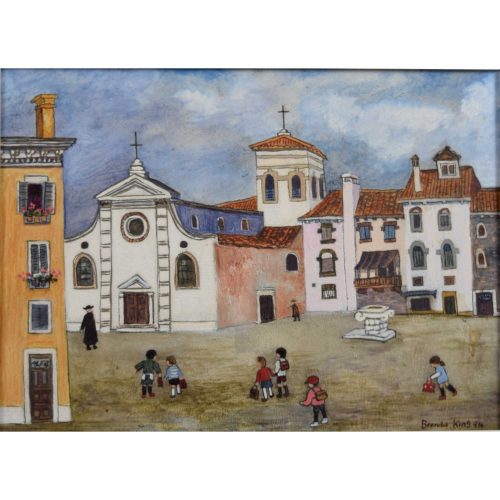
Brenda King (1934-2011)
Venetian Schoolchildren (1974)
Oil on board 16.5.x 20.5 cm Signed and dated lower right. Naive scene of school children in a Venetian square in a distinctive 1970s frame. Brenda King was born in Cumbria in 1934. She enrolled at the Lancaster College of Art from 1950 to 1954 before enrolling at the Royal Academy from 1954 to 1957, indeed, going on to exhibit frequently at the RA summer exhibition. She moved to Cornwall in 1975 with her landscape painter husband Jeremy King (b.1933), and the pair shared a studio in St Just, Lands End. Her distinctively naive and playful style, often capturing incidental figures in quaint, pastoral British scenes, is said to have been strongly influenced by the oils and watercolours of Helen Bradley (1900-1979), another Lancastrian. If you are interested e-mail info@manningfineart.co.uk or call us on 07929 749056 Condition: Generally excellent, original 1970s frame shows some wear. -
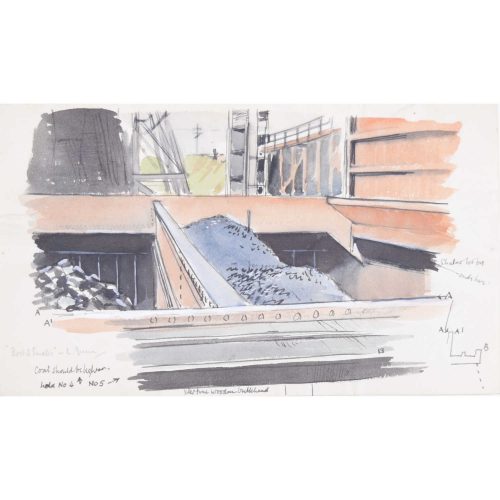
Laurence Dunn (1910-2006)
Coal Barge (c.1950)
12.5 x 25 cm Watercolour and ink Signed 'L Dunn' lower left Extensively inscribed to bottom corners, including comments 'coal should be lighter' indicating this is a preliminary watercolour for a future painting. He also makes reference to the continued existence of a 'wartime wooden bulkhead' - added to make the ship more resilient in the event of enemy action. Laurence Dunn (1910-2006) was a well-known British marine artist and writer. The World Ship Society published the following obituary for Dunn: DUNN, Laurence. [December 15 2006 — Lloyds List] Many readers will be saddened by the death of well-known marine artist and writer Laurence Dunn in his 97th year. A man of encyclopaedic knowledge, he began his lifelong love of ships in Brixham, where he meticulously recorded passing traffic with the exquisitely accurate line drawings which later became something of a trademark. While studying at London’s Central School of Art his work was noticed by the Southern Railway, which commissioned profiles of its fleet, and this in turn led to work for Orient Line, where he also designed the well-known corn-coloured hull, and later Thorneycroft, where he helped with shaping draft plans for a new royal yacht. During the second world was he worked for naval intelligence at the Admiralty, where his technique did much to improve recognition standards, and greatly expanded his shipping clientele, becoming personally known to many chairmen. As well as the shipping press he worked for mainstream publications such as Everybody’s, Sphere and the upmarket comic Eagle. Through his many contacts he enjoyed going to sea in a great variety of ships from aircraft carriers to colliers. Laurence wrote several books, starting with ship recognition titles which introduced new standards of layout, but his best known work was probably Passenger Liners, which was widely taken up by the travel trade. His love of Greece, where he was an early publicist of island cruising, let to involvement in reshaping various passenger liners beginning with Greek Line’s OLYMPIA. In later life he designed several sets of shipping stamps for the Crown Agents, produced photographic volumes on Thames and Mediterranean shipping and still found time to enjoy the passing Thames traffic. Our sympathies go to his wife Jennifer, who provided succour to the many ship lovers who beat a path to the welcoming door of their Gravesend home. -
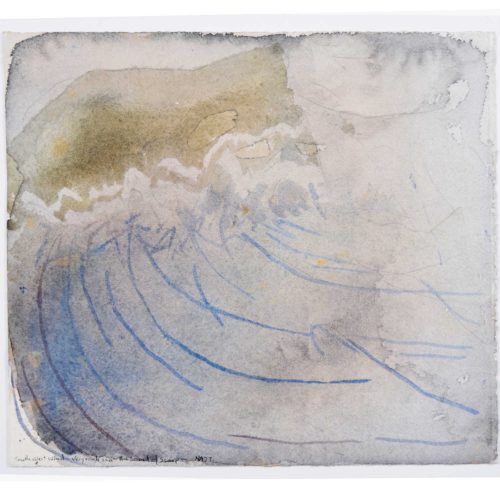
Norman Adams RA (1927-2005)
The Sound of Scarp and Vision of Bernadette (c.1980) (Double sided)
24 x 26 cm Watercolour Norman Adams RA, former professor of painting at the Royal Academy, felt strongly that, "art [without religion] would be a pretty empty vocation." Despite not going to church, nor identifying with any specific belief system, the artist's paintings of the natural world, often dramatic in nature, betray a strong spiritual intensity. On one side of this watercolour Adams has painted a monumental wave crash, captioned 'Southwest Wind - Very Rough Sea The Sea of Scarp.' On the other, is a softer, lilac abstraction entitled 'Vision of Bernadette', a reference to Saint Bernadette's famous visions of Mary at the Lourdes grotto. He studied at Harrow School of Art (1940-46) and then the Royal College of Art (1948-51). His first solo show was at Gimpel Fils in 1952, and his last at the Fine Art Society in 2004. His works included many murals and stage designs. There are many of his major works in the national collection, including the Tate, Leeds Museums, The Whitworth, the Royal College of Art, Bristol Museums, Leicester Museums, The Royal Academy and the Hepworth, Wakefield. -
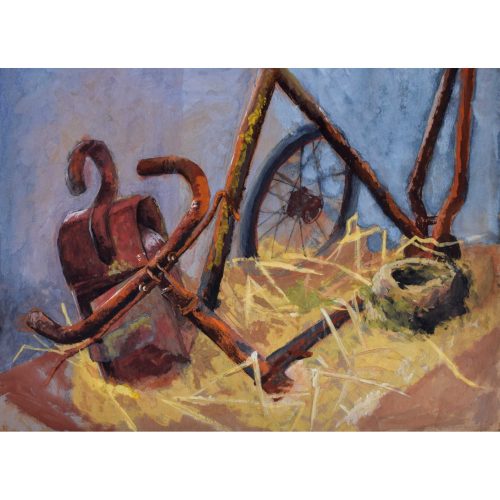
Hilary Hennes (née Hilary Miller) (1919-1993)
The Old Bicycle (c.1940)
46 x 62 cm Gouache on paper Miller was born in London, where her father was a curator at the South London Art Gallery. She attended Blackheath High School and, from 1936 to 1940, studied at the Blackheath School of Art and then for a further three years at the Royal College of Art. After graduating, Miller taught at the South East Sussex Technical College and in 1946 married the artist Hubert Hennes. The couple set up home in Oxford, where they both held teaching posts at the Oxford School of Art. Between 1948 and 1967 Miller frequently exhibited paintings at the Royal Academy in London and also illustrated a number of books on gardening and natural history, such as The Living World and Boff’s Book of Gardening. If you are interested email info@manningfineart.co.uk or call us on 07929 749056 Condition: Good -
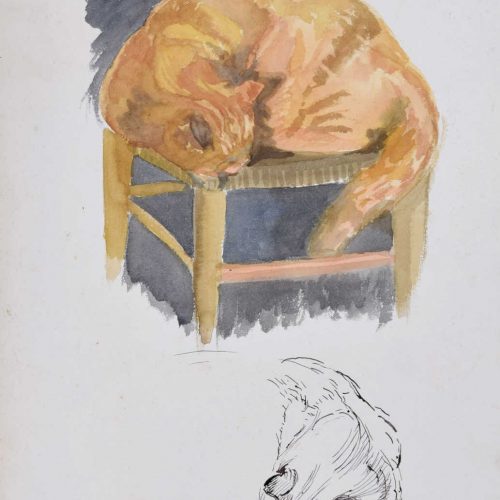
Hilary Hennes (née Hilary Miller) (1919-1993)
Cat Sleeping (c.1940)
37 x 25 cm Pen, ink and gouache on paper Miller was born in London, where her father was a curator at the South London Art Gallery. She attended Blackheath High School and, from 1936 to 1940, studied at the Blackheath School of Art and then for a further three years at the Royal College of Art. After graduating, Miller taught at the South East Sussex Technical College and in 1946 married the artist Hubert Hennes. The couple set up home in Oxford, where they both held teaching posts at the Oxford School of Art. Between 1948 and 1967 Miller frequently exhibited paintings at the Royal Academy in London and also illustrated a number of books on gardening and natural history, such as The Living World and Boff’s Book of Gardening. If you are interested email info@manningfineart.co.uk or call us on 07929 749056 Condition: Very good -
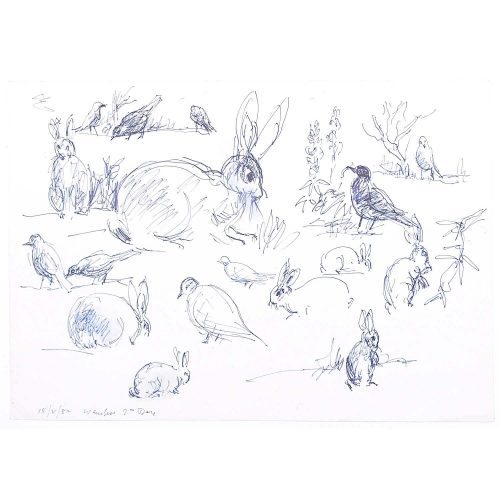
Derrick Latimer Sayer (British: 1917-1992) Rabbits for Beverly Nichols' Cats' ABC
30x21cm Pen and ink Dated 8 vi 1982 Sayer illustrated Beverley Nichols' 'Cats' A.B.C.' and we are delighted to present some of his preparatory drawings here. Search for 'Sayer' in our stock to see more of these utterly charming illustrations - mostly of cats. If you are interested email info@manningfineart.co.uk or call us on 07929 749056. Condition: Good. For biographical details and other works by the artist please click here. -
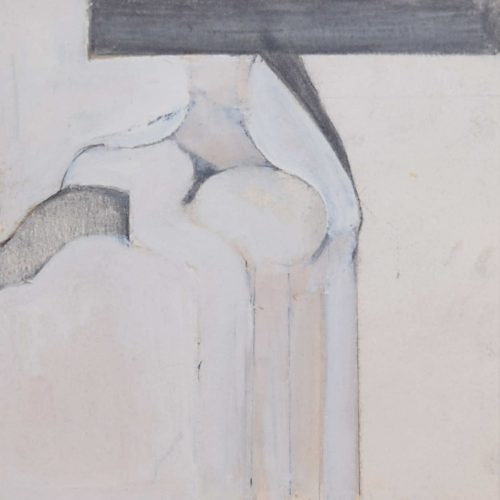
Adrian Heath Abstract Study III (1975)
Acrylic and pencil on paper 22 x 22cm Heath was born in Burma in 1920 and arrived in England aged five. In 1938 he studied art under Stanhope Forbes at Newlyn and later at the Slade School of Art. While serving in WWII, he was captured and placed in a prisoner-of-war camp in Bavaria. Heath attempted to escape from the camp but was recaptured and placed in solitary confinement; this isolation proved crucial to the development of his artistic style, as he spent much of his time there experimenting with abstract forms. When released from confinement, Heath befriended a fellow prisoner of war: Terry Frost. Together they explored the methods of painting which they had developed during their time in the camps, and following the war both became celebrated artists. We have several Terry Frost pieces available too. In 1949 and 1951, Heath returned to Cornwall. He spent time with artists like Ben Nicholson, Victor Pasmore, and Anthony Hill, and became the main link between the emerging St Ives School of artists and the British Constructivist movement back in London. He is further credited with promoting British abstract art through informal exhibitions in his studio on Fitzroy Street, as well as his manifesto-like text entitled 'Abstract Art: Its Origins and Meaning', which was published in 1953. Over time, Heath's paintings of abstract geometry and symmetry became increasingly dynamic and heavily textured, the result of layering paint on paint over the course of several days. This study features a muted colour palette and abstract asymmetric form. If you'd like to know more, please email info@manningfineart.co.uk or call us on 07929 749056. Condition: Good. Signed lower right. -
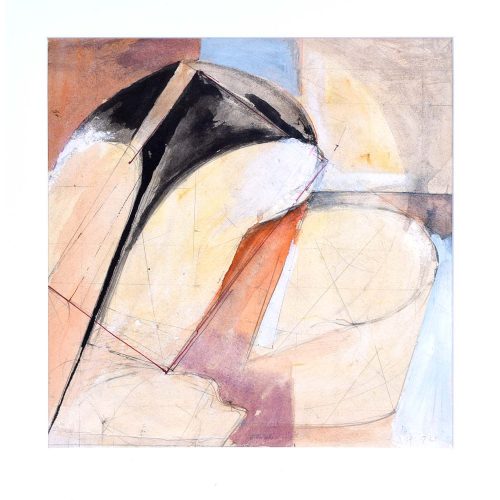
Adrian Heath Abstract Study I (1970)
Gouache & ink 35x33cm Heath was born in Burma in 1920 and arrived in England aged five. In 1938 he studied art under Stanhope Forbes at Newlyn and later at the Slade School of Art. While serving in WWII, he was captured and placed in a prisoner-of-war camp in Bavaria. Heath attempted to escape from the camp but was recaptured and placed in solitary confinement; this isolation proved crucial to the development of his artistic style, as he spent much of his time there experimenting with abstract forms. When released from confinement, Heath befriended a fellow prisoner of war: Terry Frost. Together they explored the methods of painting which they had developed during their time in the camps, and following the war both became celebrated artists. We have several Terry Frost pieces available too. In 1949 and 1951, Heath returned to Cornwall. He spent time with artists like Ben Nicholson, Victor Pasmore, and Anthony Hill, and became the main link between the emerging St Ives School of artists and the British Constructivist movement back in London. He is further credited with promoting British abstract art through informal exhibitions in his studio on Fitzroy Street, as well as his manifesto-like text entitled 'Abstract Art: Its Origins and Meaning', which was published in 1953. Over time, Heath's paintings of abstract geometry and symmetry became increasingly dynamic and heavily textured, the result of layering paint on paint over the course of several days. Here, his colour palette surrenders to the compelling geometry of the painting's abstract forms. If you'd like to know more, please email info@manningfineart.co.uk or call us on 07929 749056. Condition: Good. -
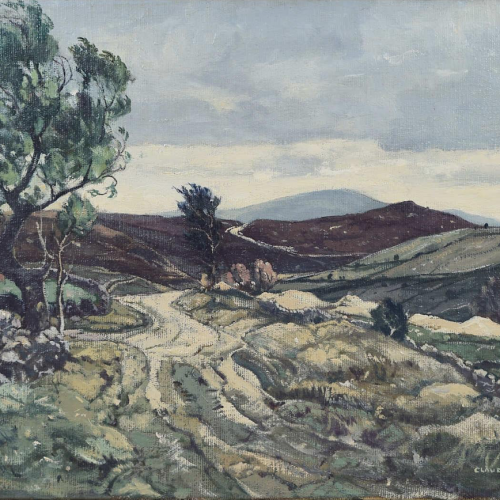
Claude Muncaster Moor above Llangollen
Oil on canvas 36 x 51 cm Condition: Excellent, recently cleaned and revarnished. Signed lower right. Click here for biographical details and other works by the artist. If you are interested, email info@manningfineart.co.uk or call us on 07929 749056. -
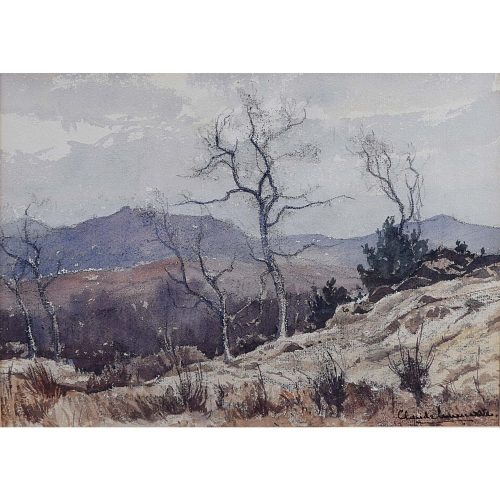
Claude Muncaster Above Finsthwaite, near Newby Bridge 1968
Watercolour 21x26.5cm 46x52cm including frame, UK shipping only Signed lower right Click here for biographical details and other works by the artist. If you are interested email info@manningfineart.co.uk or call us on 07929 749056. Condition: Good. -

Clifford Ellis (1907-1985) Snow Laden Branch
44.5x51cm Watercolour and Pen Provenance: the family of the artist, by descent.Click here for biographical details and other works by the artist. Clifford and Rosemary Ellis were famous as a husband and wife team for their fascination with nature and their vibrant and charming depictions of animals. They were the natural artists to be commissioned by Collins for their ‘New Naturalists’ series of books, which have become famous and highly collectable more for the dust jackets designed by the Ellises than for the – otherwise excellent – content. This painting is from a recently discovered series of paintings and drawings, never before seen by the general public, dating from the 1940s and 1950s. If you are interested email info@manningfineart.co.uk or call us on 07929 749056. Condition: Generally very Good. -
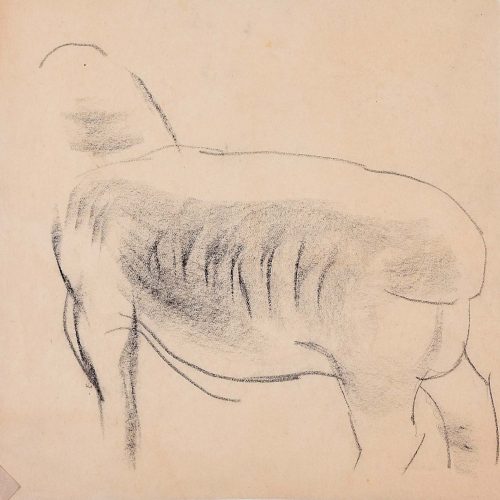
Clifford Ellis (1907-1985) Sheep
18x18cm Charcoal Provenance: the family of the artist, by descent.Click here for biographical details and other works by the artist. Clifford and Rosemary Ellis were famous as a husband and wife team for their fascination with nature and their vibrant and charming depictions of animals. They were the natural artists to be commissioned by Collins for their ‘New Naturalists’ series of books, which have become famous and highly collectable more for the dust jackets designed by the Ellises than for the – otherwise excellent – content. This painting is from a recently discovered series of paintings and drawings, never before seen by the general public, dating from the 1940s and 1950s. If you are interested email info@manningfineart.co.uk or call us on 07929 749056. Condition: Generally very Good. -
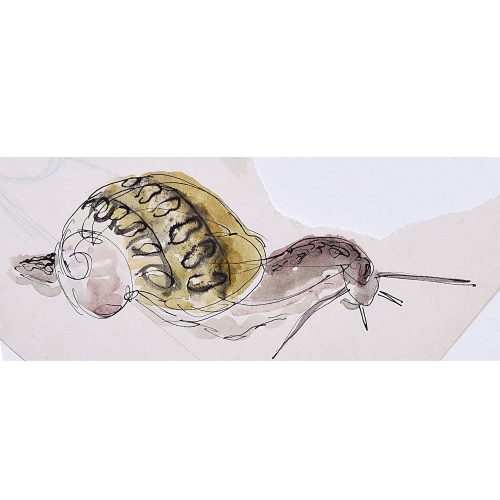
Rosemary Ellis (1910-1988) Snail XVIII
7.5x18cm Pen, ink and watercolour On antique laid paper, watermarked 'T Edmonds 1814' Provenance: the family of the artist, by descent.Click here for biographical details and other works by the artist. Clifford and Rosemary Ellis were famous as a husband and wife team for their fascination with nature and their vibrant and charming depictions of animals. They were the natural artists to be commissioned by Collins for their ‘New Naturalists’ series of books, which have become famous and highly collectable more for the dust jackets designed by the Ellises than for the – otherwise excellent – content. This painting is from a recently discovered series of paintings and drawings, never before seen by the general public, dating from the 1940s and 1950s. If you are interested email info@manningfineart.co.uk or call us on 07929 749056. Condition: Generally very Good. -
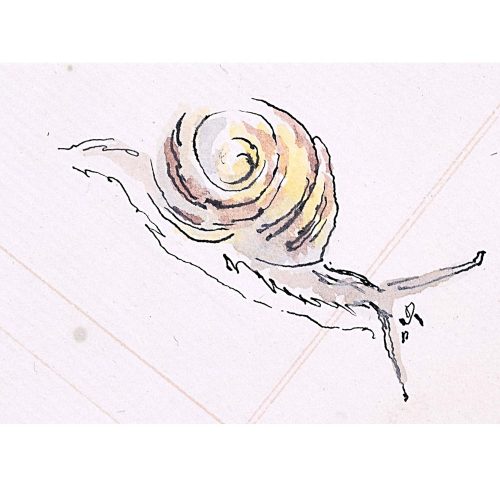
Rosemary Ellis (1910-1988) Snail XVII
5x7cm Pen, ink and watercolour On antique laid paper, watermarked 'T Edmonds 1814' Provenance: the family of the artist, by descent.Click here for biographical details and other works by the artist. Clifford and Rosemary Ellis were famous as a husband and wife team for their fascination with nature and their vibrant and charming depictions of animals. They were the natural artists to be commissioned by Collins for their ‘New Naturalists’ series of books, which have become famous and highly collectable more for the dust jackets designed by the Ellises than for the – otherwise excellent – content. This painting is from a recently discovered series of paintings and drawings, never before seen by the general public, dating from the 1940s and 1950s. If you are interested email info@manningfineart.co.uk or call us on 07929 749056. Condition: Generally very Good. -
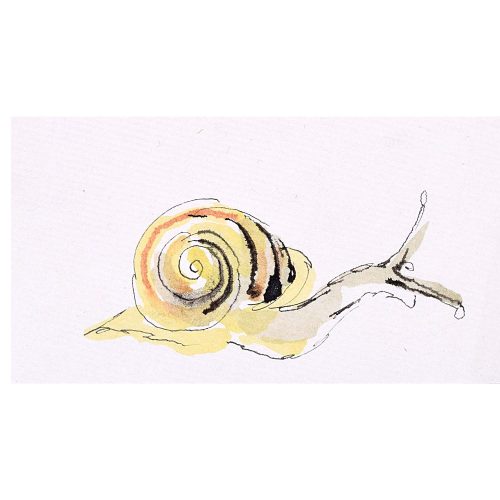
Rosemary Ellis (1910-1988) Snail XVI
4x7cm Pen, ink and watercolour On antique laid paper, watermarked 'T Edmonds 1814' Provenance: the family of the artist, by descent.Click here for biographical details and other works by the artist. Clifford and Rosemary Ellis were famous as a husband and wife team for their fascination with nature and their vibrant and charming depictions of animals. They were the natural artists to be commissioned by Collins for their ‘New Naturalists’ series of books, which have become famous and highly collectable more for the dust jackets designed by the Ellises than for the – otherwise excellent – content. This painting is from a recently discovered series of paintings and drawings, never before seen by the general public, dating from the 1940s and 1950s. If you are interested email info@manningfineart.co.uk or call us on 07929 749056. Condition: Generally very Good. -
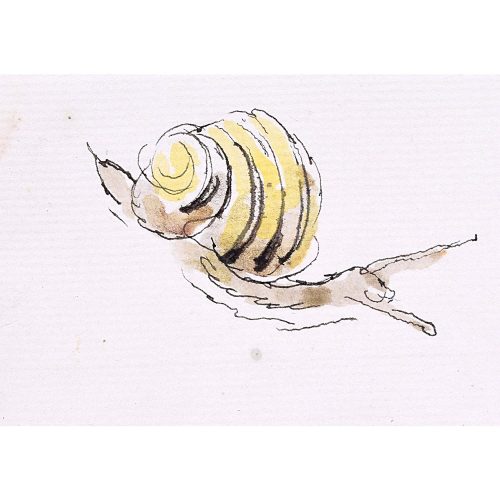
Rosemary Ellis (1910-1988) Snail XV
7.5x5.5cm Pen, ink and watercolour On antique laid paper, watermarked 'T Edmonds 1814' Provenance: the family of the artist, by descent.Click here for biographical details and other works by the artist. Clifford and Rosemary Ellis were famous as a husband and wife team for their fascination with nature and their vibrant and charming depictions of animals. They were the natural artists to be commissioned by Collins for their ‘New Naturalists’ series of books, which have become famous and highly collectable more for the dust jackets designed by the Ellises than for the – otherwise excellent – content. This painting is from a recently discovered series of paintings and drawings, never before seen by the general public, dating from the 1940s and 1950s. If you are interested email info@manningfineart.co.uk or call us on 07929 749056. Condition: Generally very Good. -

Rosemary Ellis (1910-1988) Snail XIV
11x4.5cm Pen, ink and watercolour On antique laid paper, watermarked 'T Edmonds 1814' Provenance: the family of the artist, by descent.Click here for biographical details and other works by the artist. Clifford and Rosemary Ellis were famous as a husband and wife team for their fascination with nature and their vibrant and charming depictions of animals. They were the natural artists to be commissioned by Collins for their ‘New Naturalists’ series of books, which have become famous and highly collectable more for the dust jackets designed by the Ellises than for the – otherwise excellent – content. This painting is from a recently discovered series of paintings and drawings, never before seen by the general public, dating from the 1940s and 1950s. If you are interested email info@manningfineart.co.uk or call us on 07929 749056. Condition: Generally very Good. -
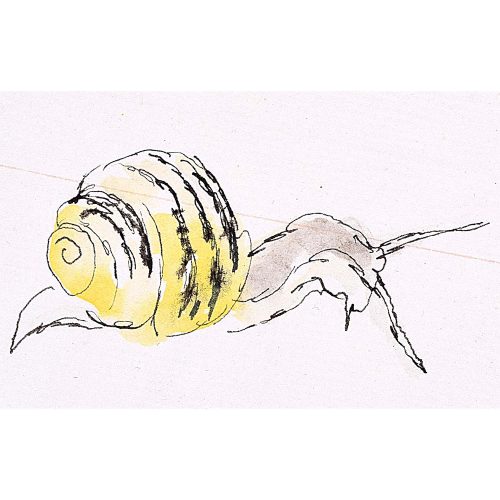
Rosemary Ellis (1910-1988) Snail X
5x7cm Pen, ink and watercolour On antique laid paper, watermarked 'T Edmonds 1814' Provenance: the family of the artist, by descent.Click here for biographical details and other works by the artist. Clifford and Rosemary Ellis were famous as a husband and wife team for their fascination with nature and their vibrant and charming depictions of animals. They were the natural artists to be commissioned by Collins for their ‘New Naturalists’ series of books, which have become famous and highly collectable more for the dust jackets designed by the Ellises than for the – otherwise excellent – content. This painting is from a recently discovered series of paintings and drawings, never before seen by the general public, dating from the 1940s and 1950s. If you are interested email info@manningfineart.co.uk or call us on 07929 749056. Condition: Generally very Good. -
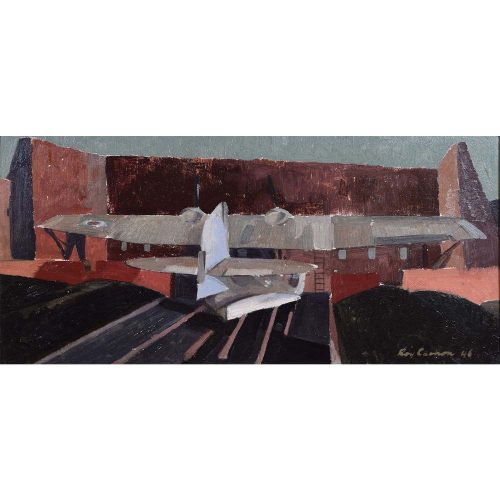
Roy Carnon (1911-2002) Derelict Catalina Redhills Lake near Madras
'Used in Stocks for Gunnery Practice' Oil on board, artist's painted frame Signed and dated 1946 and inscribed with title to reverse Click here for other works by Carnon. This 1946 painting of a derelict Second World War aircraft is a portrait of postwar disillusionment. The battered Catalinas which had survived the war became useful only as ground-based objects for target practice. Carnon's brooding colours and impasto application of paint illustrate how the technologies which helped the Allies to win the war became, overnight, unnecessary. The airmen based in India similarly became unnecessary, but unable to be demobilised they initiated the so-called RAF Mutiny in January 1946. Carnon attended Chiswick Art School becoming an illustrator. In 1965 he was responsible for visualising spacecraft for 2001: A Space Odyssey, being designer of the iconic 'wheel' spacestation. These drawings are now in the Kubrick archives at UAL. If you are interested email info@manningfineart.co.uk or call us on 07929 749056. Condition: Excellent, recently cleaned and in artist's original frame. -
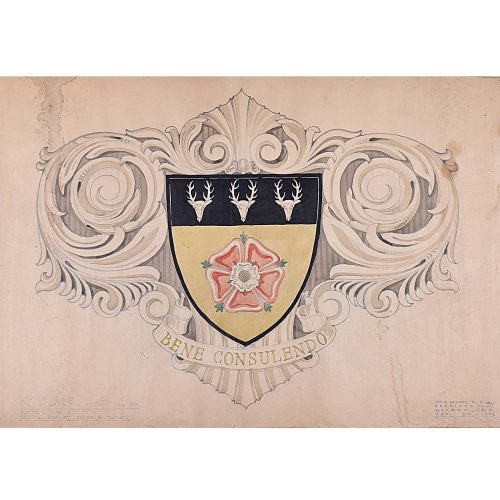
D.L Hadden
Design for Coat of Arms for Council Chambers
Watercolour and pencil 52x74.5cm Signed and dated 1959 A traditional coat of arms design for the city council chambers with directions by the artist that it is to be carved in lime and coloured as depicted. One of the many works Hadden produced during his time as senior designer at Geo M Hammer. For biographical details and other works by the artist click here. If you are interested email info@manningfineart.co.uk or call us on 07929 749056. Condition: Generally good, some water staining as visible in image. -
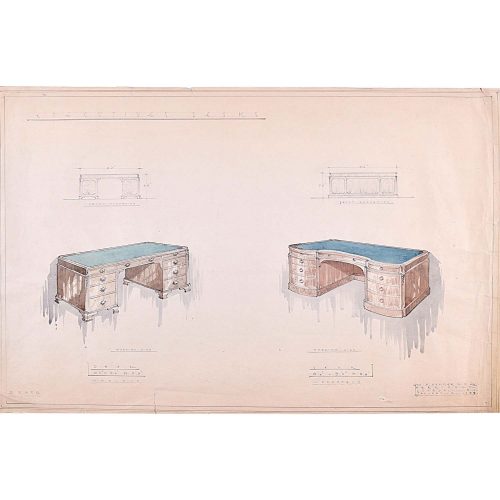
D.L Hadden
Design for Executive Desks Geo.M.Hammer
Watercolour and pencil 41x51cm Signed and dated 1959 Two beautifully detailed executive desks designs with sketches front elevations. Hadden's flair with woodwork design is evident in this masterful drawing. For biographical details and other works by the artist click here. If you are interested email info@manningfineart.co.uk or call us on 07929 749056. Condition: Generally good, some soft creases round the margins. -
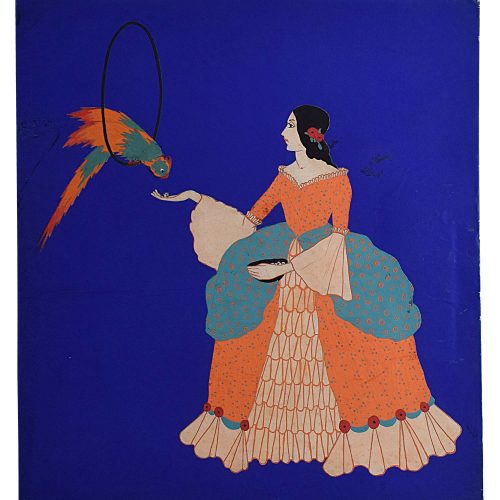
Gladys Williamson
Lady and Parrot
Original Painted Design for Poster Collage and Gouache43x38.5cm
If you are interested email info@manningfineart.co.uk or call us on 07929 749056. Condition: Generally very good, slight wear to blue background some spotting to rim of dress. -
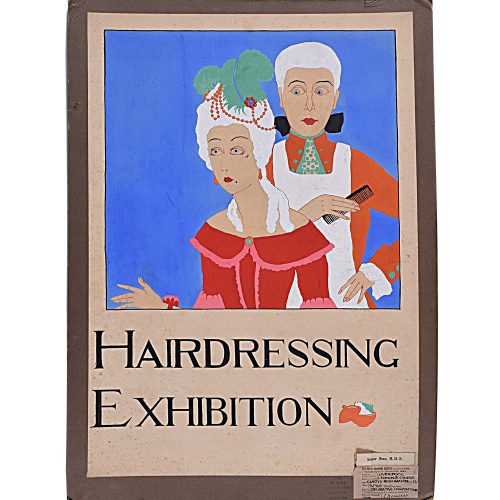
Gladys Williamson
Hairdressing Exhibition
Original Painted Design for Poster55x38cm
Gladys Williamson, a student at St Edmunds College, Liverpool was awarded a silver star for this decorative composition. The award is still attached in the bottom right corner of the design. If you are interested email info@manningfineart.co.uk or call us on 07929 749056. Condition: Generally good, some light spotting. Mounted to board by artist, with label to bottom right. -
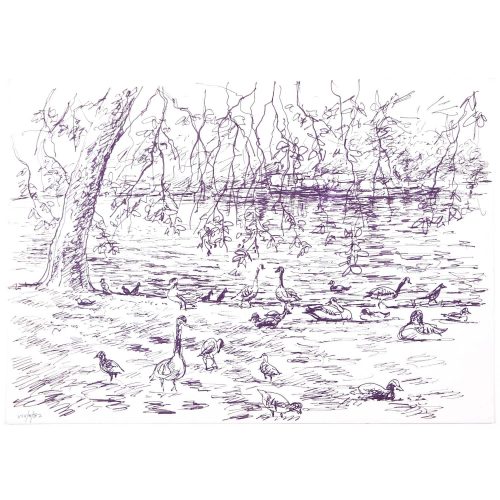
Derrick Latimer Sayer (British: 1917-1992) Ducks for Beverly Nichols' Cats' ABC
30x21cm Pen and ink Dated 8 vi 1982 Sayer illustrated Beverley Nichols' 'Cats' A.B.C.' and we are delighted to present some of his preparatory drawings here. Search for 'Sayer' in our stock to see more of these utterly charming illustrations - mostly of cats. If you are interested email info@manningfineart.co.uk or call us on 07929 749056. Condition: Good. Two punched holes. For biographical details and other works by the artist please click here.


